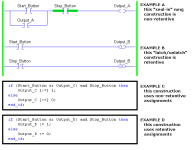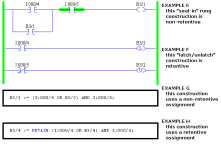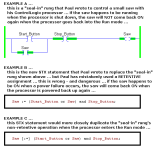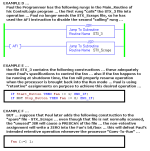Thats not what 'retentive' means.
And this cant be right either:
For achieving OTL and OTE in ST:
// similar to OTL
// if condition is TRUE then var is set to TRUE
IF condition THEN
var := TRUE ;
END_IF ;
// similar to OTE
// if condition is TRUE then var is set to TRUE
// if condition is FALSE then var is set to FALSE
var := condition ;
And this cant be right either:
Ron Beaufort said::= is RETENTIVE and basically acts like an Allen-Bradley OTL (Latch) instruction in ladder logic ...
For achieving OTL and OTE in ST:
// similar to OTL
// if condition is TRUE then var is set to TRUE
IF condition THEN
var := TRUE ;
END_IF ;
// similar to OTE
// if condition is TRUE then var is set to TRUE
// if condition is FALSE then var is set to FALSE
var := condition ;









